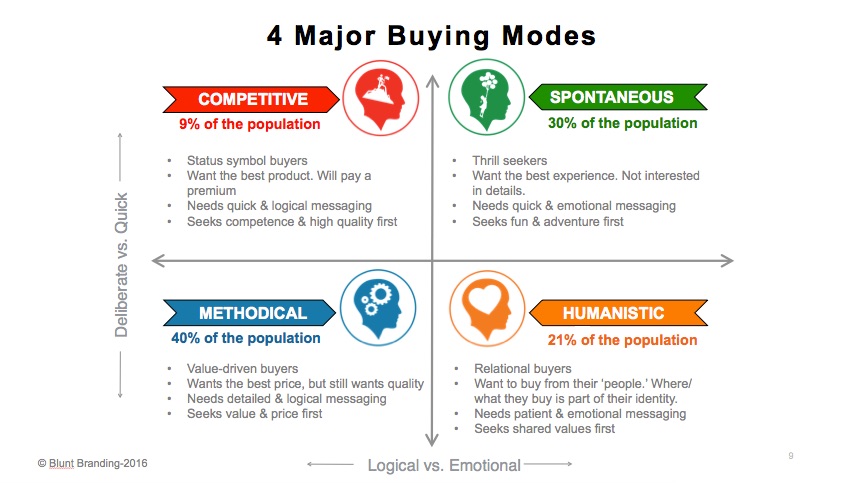Call it copy, text, messaging, content or whatever you like, but many cannabis business owners simply do not give the messages they send to customers the effort that is required in an age of customer control. Messaging on packaging, signs, ads, websites, product descriptions, and sales copy almost universally falls short — messages are limited, confusing, and in some cases just outright horrific.
Nobody ignores this part of their business on purpose. Customers just don’t behave like they used to. Smartphones and mobile devices have rendered tried and true sales and marketing methods that have worked for decades irrelevant. This dramatic shift has left business owners scratching their heads.
While the customer’s ultimate experience with your business (or product) is the foundation of growing your business, the messaging and copy that surrounds it can make a game-changing difference in how fast and how broad of an appeal your product has.
The idea that ‘one’ message will move everyone in your prospective customer base to buy what you sell is a very bad idea.
The motivations and needs that drive the purchase of any one product can vary wildly.
How We Make Decisions
Typically, we all make buying decision along two axes.
- Quick vs. Deliberate –or–
- Emotional vs. Logical
Each quadrant represents a major buying mode that you can start taking into account when crafting messages of any kind.
Look at the buying modes applied lightly to buying a strain cannabis flower.
- The Competitive buyer wants superior weed. Depending on their need, high THC or CBD percentages, or even flavor is their priority. Exclusivity is a plus too.
- The Humanistic buyer is about people and relationships. They would like to know about the grower, would like to know about the seller, and especially wants to know if people like her have bought this strain. Is there a story behind the strain?
- The Methodical buyer wants value. More for less, sales, and added value excite the methodical buyer. Needs detailed data about each strain.
- The Spontaneous buyer wants to have fun. Novelty, a fun budtender, and description of the experience will get them excited.
Now look at how the four primary buying ‘modes’ come into play when buying a glass water pipe.
- The Competitive buyer wants a superior piece, one he can show off and is better than all or most of their friends. Will be interested in big brand names or exclusive artists/designs.
- The Humanistic buyer wants to know the glass blower or about the manufacturer and what they stand for.
- The Methodical buyer wants value. They will buy the most glass for the least amount of money.
- The Spontaneous buyer wants convenience. Make it easy and fun and this buyer will be hooked. Novelty design, unique features or anything that adds fun or dimension to the smoking experience.
What This Means for You
You’ll discover a whole new world of sales and growth opportunity when you understand of how to communicate to prospects in their buying modes. Not just for messaging that sells better but for crafting compelling customer experiences, even products.
Keep in mind this isn’t a comprehensive description of each buying mode’s needs and motivations, it is just a start. And we have yet to take into account how each behaves at each buying stage or detail their different processes for making a buying decision.
Wouldn’t all this be helpful to know when writing copy for a new product, designing packaging, writing strain descriptions, etc.?
You might recognize your own primary buying style or some of your customers here. But the point is simple. If you don’t start communicating with your customers in a way they prefer to be communicated with and/or sell to them in a manner they prefer, your messaging will miss the mark. Period.
Your prospective customers have too many choices and too little time to stick around waiting for you to get it right, especially if your competitors are speaking their buying language already. It’s no longer enough to just communicate. You must speak directly to your customers felt needs. And from customer to customer—individual felt needs can be as different as oil and water.
Are you accounting for those differences in your messaging?
Now would be a good time to start.
Get daily cannabis business news updates. Subscribe
End

